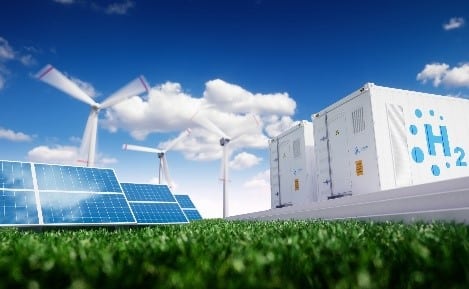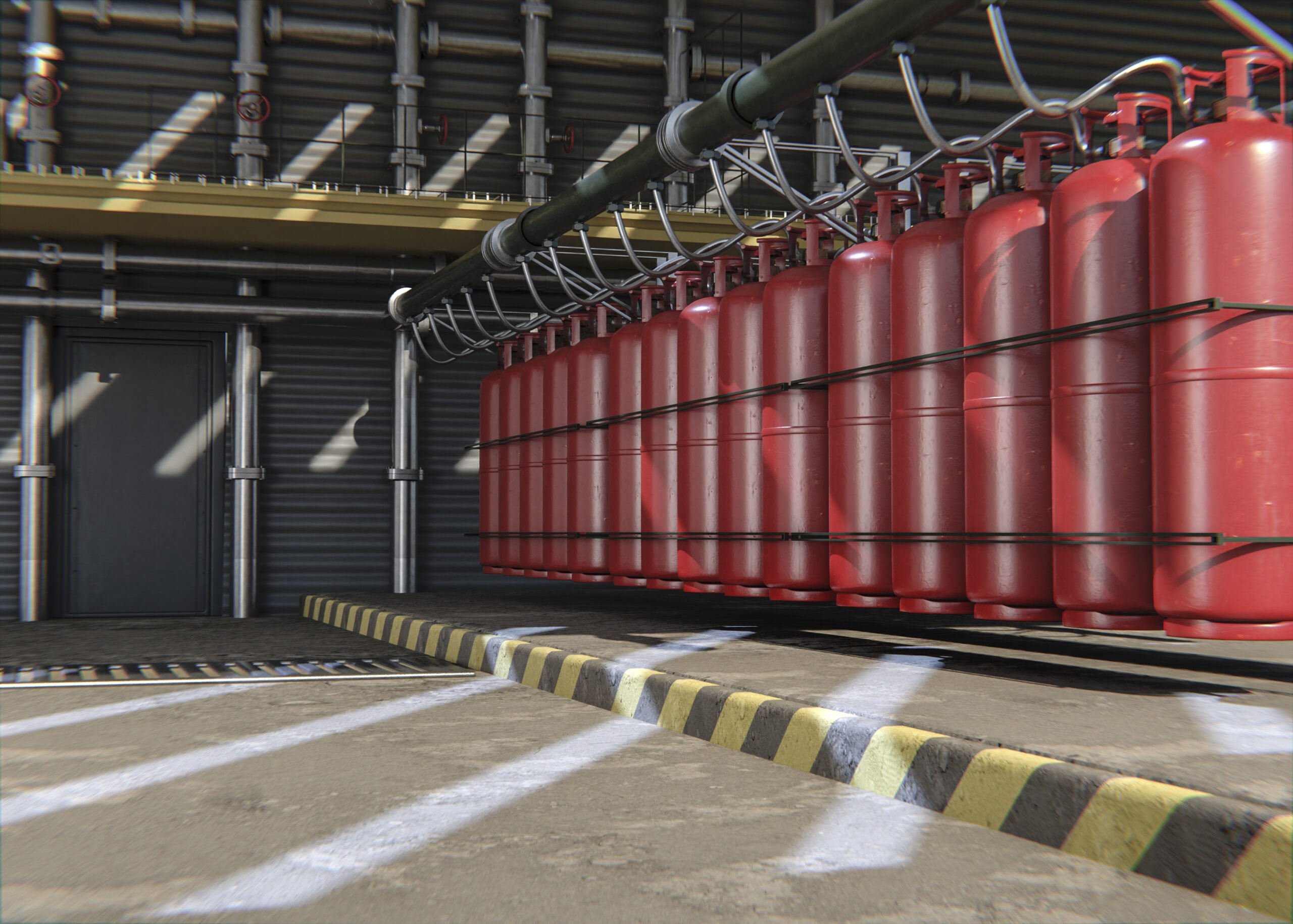Hydrogen
Hydrogen. Almost everyone heard about it. But what is it? And what can you do with it?
Hydrogen is the most common element in the universe. You hardly ever come across it on its own. By using green energy to separate hydrogen (H2) from other molecules, for example water (H2O), we can produce sustainable, green hydrogen. This energy can be released by combining the hydrogen molecules with oxygen (O2) from air. By using green electricity to produce hydrogen, it can play a major role as a substitute for fossil energy in the energy transition. An additional advantage is the fact that energy from solar panels and wind turbines can be transported very effectively and efficiently and can be stored in large quantities for a long time.
Hydrogen from fossil fuels is already widely produced and used in the industrial sector but, unfortunately, sustainable hydrogen is still rare. However, we are slowly moving towards sustainable, green hydrogen, particularly as an energy carrier in transport, for example. This will not happen of its own accord, and the sustainable hydrogen chain is still in its early stages. Conversion or production by means of electrolysis, transport, storage and use are all essential components of that chain. Summit Engineering has a wealth of knowledge of and experience with every step of that chain. This enables us to develop a business case and to execute projects together. Whether it concerns one of the components of the chain or the entire chain.

Production
Green hydrogen is often produced with electrolysis. Electrolysis uses electricity to split the molecules in water (H2O), so you end up with oxygen (O2) and hydrogen (H2). Ideally, this process uses green electricity from solar panels and wind turbines for example. If green electricity is used to make hydrogen, it is sustainable and that is known as ‘green hydrogen’. At Summit Engineering, we have gained experience in the field of electrolysis (PEM and Alkaline) in the HyStock project and the Hydrohub MegaWatt Test Centre project, among others.
Transport
Hydrogen can be transported in different ways, including by lorries and/or through pipelines. At Summit Engineering we can work out which option is best for your project in terms of technology and costs.
We know how to devise the best way to transport hydrogen in your situation. We are also experienced in converting pipelines from traditional natural gas to hydrogen; see Gasunie Waterstof Services, for example.

Water as by-product
Storage method for sustainable electricity
Refuel fast

Storage
As hydrogen can be compressed, it can be stored in cylinders, tanks and salt caverns, for example. Storage may be necessary during transport, to balance supply and demand, or due to availability requirements. Summit Engineering can provide you with advice based on your needs in every situation. Click here for more information about energy storage and about how Summit Engineering can be of assistance.
Usage
The market for green hydrogen is developing rapidly. Hydrogen can be used in transport, in industrial processes, in heating, in electricity generation with fuel cells and in balancing the electricity grid. Its use is increasing significantly and together with other sustainable technologies it will play an important role. Whatever application you have in mind: Summit Engineering is at your service.

Transport and heavy transport
Hydrogen refuelling stations (HRS) are required to be able to use hydrogen in transport and heavy transport. Summit Engineering has extensive experience of building such stations: from regulations and permits to engineering and project management. We are fully up to speed with the latest developments in heavy hydrogen-powered equipment and we know the parties that operate in this market. This enables us to advise and assist you with realising the entire supply chain that is required to make heavy and other transport greener by using hydrogen.
Want to know more about hydrogen?
Call/mail one of our experts
Arjan Hartemink
arjan@summitengineering.nl
+31 (0)6 11 00 56 89
